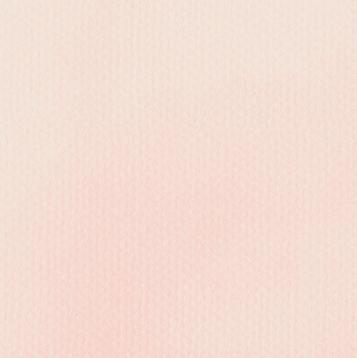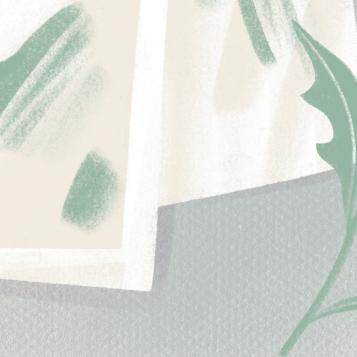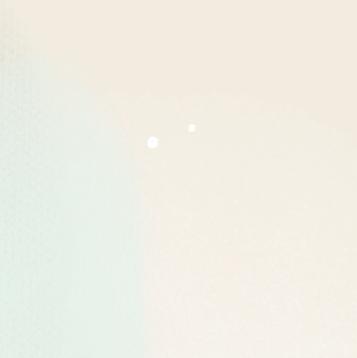

















Sadie is looking for a gift to give to her grandma.
But it has to be perfect. Will Sadie find inspiration from the world around her before the special day arrives?













































For my family


—Alison
For Jammie
—Jesse

Eighteen Flowers for Grandma
Text copyright © 2024 Alison Goldberg


Illustrations copyright © 2024 Jesse White
Published in 2024 by Red Comet Press, LLC, Brooklyn, NY

All rights reserved. No part of this book may be used or reproduced in any manner whatsoever without written permission except in the case of brief quotations embodied in critical articles and reviews.
The publishers would like to thank Rabbi Craig Axler
Library of Congress Control Number: 2024930224
ISBN (HB): 978-1-63655-121-0
ISBN (EBOOK): 978-1-63655-122-7


First Edition
Manufactured in China RedCometPress.com




















Today is art day with Grandma! Sadie sets up her easel.

Grandma takes out paints, brushes, charcoals, pastels, tissue paper, glue, and fabrics too. “So we’ll have plenty of options for creative inspiration!” she says.

When Grandma makes art, she likes to use many different materials.

Sadie smudges and blends pastels. Grandma squeezes dabs of colors onto a palette, then chooses tissue paper.

“Are you painting flowers today?” Sadie asks.
“Yes, those peonies. It’s my final assignment before graduation.”

Grandma and Sadie are both students.
“How did you make those egg shapes?” Grandma asks.

“I used my palm,” Sadie says.
“You are so creative. I love learning from you.”
Sadie points to her necklace. “Look, we match!”

When Sadie graduated from kindergarten, Grandma gave her a necklace that says “chai.” She explained that chai means “life” in Hebrew, and she wished for Sadie to have a life that is full of wonder. “Never stop learning and trying new things.”

Grandma smiles. “ ‘Chai’ is written with the eighth and tenth letters of the Hebrew alphabet, and eight plus ten is eighteen. It’s a lucky number.”

Sadie writes eighteen on her paper.

“May our lives be filled with art and our art be filled with life,” says Grandma.

“With chai!” says Sadie, the ch sound coming from the back of her throat.


Now that Grandma is graduating from college, Sadie wants to give her a special gift of chai too.
But what?

She’ll make Grandma a gift of eighteen! But eighteen what?

As Sadie walks home from school the next day, many flowers are in bloom. She picks a lilac blossom, and the sweet smell tickles her nose.

This gives her what Grandma would call “creative inspiration.”

















She rifles through her art bin for paper and poster paints, then dips the lilac stem into paint, using it like a stamp.











She dips and prints, dips and prints . . .


. . . until she has eighteen flowers.











Grandma loves flowers. The lilac is sweet and the stem makes interesting designs. But there is something about this painting that just isn’t Grandma enough.
Sadie wants her gift to be special, like Grandma.

















The next day at the park, Sadie has another creative inspiration. She collects eighteen dandelions, searching for the brightest ones she can find.

At home, she places them between waxed paper, then stacks a pile of books on top of them. It’s hard to wait, but Sadie leaves the dandelions beneath the books for three whole days.

But on Friday when she checks on the pressed flowers, some are a little droopy.

Sadie is feeling a little droopy herself. These flowers just aren’t Grandma enough.

She has to come up with an idea for her gift soon. Grandma’s graduation is next week!

Sadie tries making eighteen flowers with cardboard and crayons . . . then buttons and glue . . . then colored pencils.
She likes the patterns on the cardboard . . .

how shiny the buttons are . . . and the long stems she drew.

Still, she isn’t happy with these bouquets because there is something about each one that doesn’t seem Grandma enough. Grandma is very creative. Sadie wants her gift of chai to remind her of Grandma. What should it be?


On Saturday night, Sadie scrubs the glue off her hands to get ready for her cousin’s wedding party. She’s excited for the big celebration, and to see Grandma.

During the hora, Sadie and Grandma hold hands and laugh as they dance around and around to the music of the klezmer band’s horns and drums.

Everyone clinks their glasses and says, “L’chaim—to life!”

Grandma points to a big vase of flowers on the table. “I’d love to paint those.”
“Why do you always paint flowers?” Sadie asks.
“They have so many shapes and scents and colors,” Grandma says.

“The artist Chagall once said of flowers, ‘They’re life itself, in all its happy brilliance.’”

Sadie looks closer, paying attention to each one.

Her eyes sparkle as she finds her best creative inspiration yet.

The next morning, Sadie can’t wait to get started. She takes all her materials out of her art bin.

Shecutsandfolds and wraps and scrunches andgluesanddraws anddots and paints.


She has eighteen different flowers.
Together, they are sweet, bright, creative, fun, and filled with life.

Just like Grandma.

Finally, her gift of chai is Grandma enough!



CHAI (יח): A word and symbol that means “life,” usually pronounced like the English word “high,” but the ch is guttural. The common Jewish toast “l’chaim” (which means “to life”) is often said at celebrations in anticipation of all the good things to come.

MARC CHAGALL (1887–1985): Chagall was a Belarusian-French artist. An early modernist, he was associated with several major artistic styles and created works in a wide range of formats, including painting, drawings, book illustrations, stained glass, stage sets, ceramics, tapestries, and fine art prints.


JEWISH PAPER CUTTING: This traditional form of Jewish folk art is made by cutting figures and sentences from paper or parchment. It is connected with various customs and ceremonies and associated with holidays and family life. Paper cuts often decorated ketubbot (marriage contracts), mizrahs, and ornaments for festive occasions. Jesse White has incorporated her own take on this tradition into the book’s illustrations.

KLEZMER: An instrumental musical tradition of the Ashkenazi Jews of Central and Eastern Europe. The essential elements of the tradition, played at weddings and other social functions, include dance tunes, ritual melodies, and improvisations.




The Hebrew alphabet consists of twenty-two letters and they are all consonants. Hebrew is written from right to left with Alef (א) being the first letter and Tav (ת) the last. The Hebrew alphabet is often called the “alef-bet,” combining the first two letters.


There are variations to some of the letters, different letterforms based on the placement in a sentence, vowel variations, and even different characters when a letter is at the end of a word. Chai (יח) is a combination of the eighth (chet) and tenth (yod) letters, below in red.














This story is inspired by my own grandmother, Eva Dersofi, who graduated from college when she was seventy-eight years old. She had taken some college classes as a young adult but didn’t have the chance to finish her program. When she was in her seventies, she started taking classes at a local community college to pursue her love of art, including oil painting and photography. She loved to paint flowers! Eventually, she realized that with only a few more courses, she might be able to complete her degree. She signed up for math classes, got her first university to transfer her credits from almost fifty years before, then received her college degree.









I wanted to honor her lifelong commitment to learning through a story that highlights the Jewish tradition of giving chai. A gift of chai is a symbolic gift of life. It sends the recipient a wish for good things to come. This is something my family has done to celebrate milestones like graduations and b’nai mitzvah, and when giving tzedakah.
I included the artist Marc Chagall in this story because I thought my characters would connect with his art like I have. Chagall was born in 1887 in the Russian Empire. He created art throughout his long life in a variety of media, such as stained glass, oil painting, and stage set design. His lively and expressive artworks often drew inspiration from Jewish culture and stories. Flowers appear in several of his paintings. Late in life, he reflected on their significance: “you could wonder for ages about what flowers mean, but for me they’re life itself, in all its happy brilliance.”*


*Polonsky,







ALISON GOLDBERG is a writer based in Cambridge, Massachusetts, and the author of I Love You for Miles and Miles She also wrote the award-winning nonfiction picture book Bottle Tops, a biography of the Ghanaian artist El Anatsui. Eighteen Flowers for Grandma was inspired by her own grandmother, who graduated from college at the age of seventyeight. alisongoldberg.com

JESSE WHITE is an illustrator, author, and muralist who creates whimsical, wonder-filled work about imagination and adventure. Nature is her core throughline, a focus that comes from her childhood in rural North Carolina. She lives in Durham, North Carolina. jessewhiteillustration.com















“May our lives be filled with art and our art be filled with life.”









